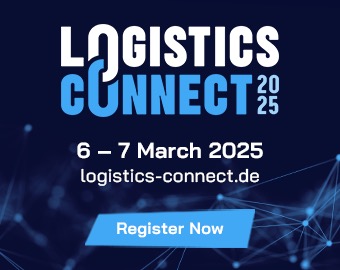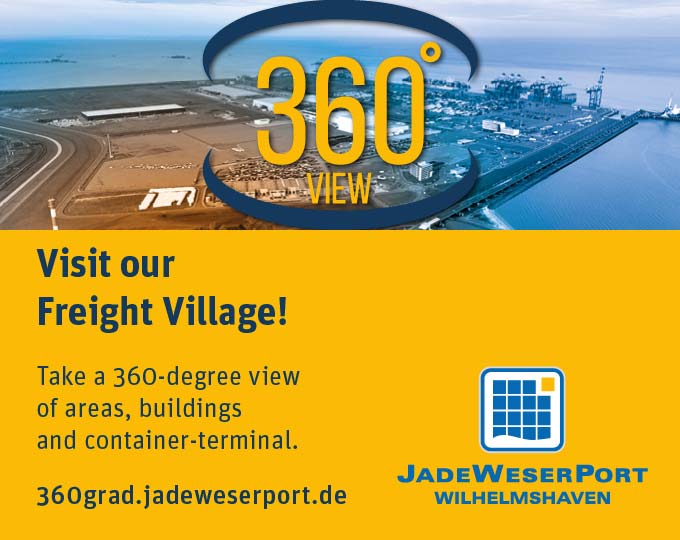After a boom phase last year, the development of the global financial markets, the steep rise in inflation and the resulting uncertainties, among other things, have ensured that the key players on the logistics real estate market are acting rather cautiously at present. They do, however, have complex ideas on how to proceed – especially with a stronger focus on sustainability, digitalisation and increased attractiveness.
Koepke’s company is one of the leading providers of integrated services across the entire real estate life cycle and, in a co-mandate with Robert C. Spies, is also responsible for marketing the new 140,000m² P3 Logistic Parks logistics centre at the JadeWeserPort Freight Village, due for completion in early 2025.
For Koepke, the 2023 real estate year has been characterised by three specific factors – a growing shortage of space, rising rents and a wide range of measures intended to reduce energy consumption. “Space for new logistics properties is scarce, and the vacancy rate in the top five locations is just one per cent,” adds Koepke. “However, the situation is still much more relaxed in northern Germany than it is in the south.” As far as energy conservation is concerned, Koepke has noticed a clear trend away from heating properties with gas and towards the use of electronic solutions, such as heat pumps. “But other sustainable concepts also exist,” Koepke continues. “For example, the managers at C3 Bremen opted to install an XXL photovoltaic system on the roof of the logistics centre to supply their electricity.” (see p. 14) In addition, the call for what are known as Environmental Social Governance (ESG) concepts, which take environmental, sustainability and social issues in corporate governance into account, is becoming louder in the industry. “This is good for the environment, but there are many new requirements for developers and increased costs associated with it,” Koepke explains.
“Logistics is unwelcome in many places”
Similar to Koepke, Björn Sundermann, Managing Director of Robert C. Spies Industrial Real Estate, also recognises the reason for the current state of the market in an “overall conglomerate of increased financing costs and low willingness to finance”, pointing out that, among other things, rents for logistics and industrial properties have increased by up to 30 per cent in the past 18 months due to rising yields. Amid this mixed situation, however, he has identified that Germany’s city-state of Bremen finds itself in a special position. “Even though Bremen has always lived from logistics,” Sundermann explains, “we simply can’t expand endlessly here. Instead, we need to consider appropriate solutions for counteracting the shortage of space.” Two options Sundermann suggests are constructing the Achim-West industrial estate, which has been planned for a while, but has not yet begun, and an expansion of the Cargo Distribution Centre (GVZ) in Bremen. However, he also sees a shift to neighbouring federal states as an unavoidable, yet realistic scenario and refers, for example, to projects involving Robert C. Spies Industrial Real Estate.
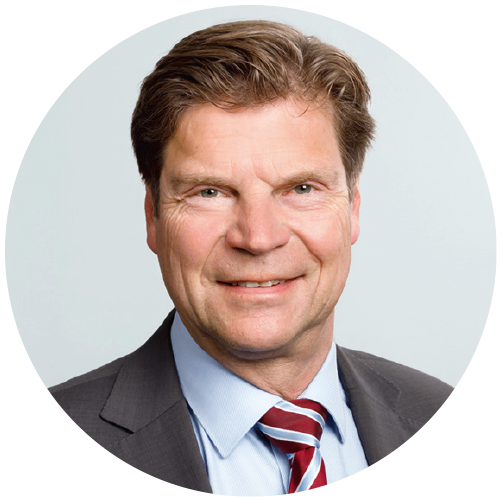
“Space for new logistics properties is scarce.”
Rainer Koepke, Head of Industrial & Logistics Germany at CBRE
Many former industrial sites in excellent locations
Fred-Markus Bohne, Managing Partner at Panattoni Germany and Austria, attributes the current reluctance shown by many players in the market to how hard it is to foresee further developments. “Those in charge need to know where things are heading and to factor reliability into their calculations, which they just can’t do at the moment,” states Bohne. At the same time, he points out that Panattoni, as Europe’s leading project developer for industrial and logistics real estate, has brokered more than 500,000m² of usable space to clients in Germany in the first half of 2023, despite this hesitancy. In June, for example, his company broke ground on the City Dock in the metropolitan region of Hanover. The 47,000m² brownfield, which has been extensively refurbished and revitalised after many years of use as a chemical site, is set to provide around 24,000m² of new commercial space by February 2024. “Although the development of logistics real estate in the industrial sector is our core business,” Bohne explains, “the smaller secondary City Dock project is also doing well. Here, customers – from e-scooter suppliers, to e-commerce specialists, to carpenters – can manage their between 800m² and 2,000m² space, sometimes across several contiguous units, completely how they wish.” More than a dozen projects similar to the City Dock have already been completed in Germany.
Panattoni places particular emphasis on the sustainability aspect of the Hanover project. The roof, for example, is pre-equipped to take a photovoltaic system. Fossil-free heating of the property using an air-source heat pump and a sustainable greening concept for the outdoor facilities are also planned. “These should no longer be considered highlights, rather as standard requirements that the market demands of us,” Bohne clarifies. He also outlines the brownfield strategy, currently accounting for more than 80 per cent of Panattoni’s business volume, with similar clarity. “Germany is an industrial nation,” he acknowledges, “which is why we have so many former industrial sites in excellent locations here. As long as the damage from the past is documented and the projects are feasible, from my point of view it makes more sense to focus on brownfields than greenfields.”
Leasehold – sensible but not without its problems
Malte Wilkens, Managing Partner of the Peper & Söhne consortium, also sees a clear trend towards using more brownfield than greenfield areas. Furthermore, the manager of the Bremen-based company, whose core businesses are project development and real estate management, has identified an increased focus on digitalisation and more sustainability in the market. “The industry is still dominated by a very analogue structure where, for example, building applications have to be printed out seven times,” he explains. “However, we’re already well positioned in terms of digitalisation, also thanks to the use of Proptech tools such as ‘Cloud-brixx’, which help us in our work with our project partners.” Likewise, both modern software solutions and intelligent sensor technology that, in conjunction with digital sensors and the consumers, provide important data about the property, including gas and electricity consumption and floor and impact loads, have been in use within the properties for some time. In terms of sustainability, Wilkens draws our attention to the logistics centre in Langwedel, Lower Saxony, which Peper & Söhne is currently working to complete and which will be the first logistics centre in northwest Germany to operate without fossil fuels. “We’re aiming for our first DGNB platinum certificate here. We’ll find out whether we’ve got it in this year’s fourth quarter,” he tells us.
Other projects in which Peper & Söhne is playing or has played a significant role include the 13,000m² Atlantic One multi-user hall, which was completed at JadeWeserPort in 2021 and taken over by P3 Logistic Parks this year, and a 15,000m² industrial and logistics hall, which has been used by VW supplier Grupo Sesé since 2022. In addition, Wilkens explains that several projects, for example in the automotive sector, are currently being implemented at the Hansalinie industrial park. Despite these successes, however, he adds that Peper & Söhne is not looking to complete any more projects in the ports in the future. “Leasehold and the bureaucracy associated with it is the reason for this,” says Wilkens. “In principle, we do not have a problem with leasehold property,” he adds, “in fact, we think it is absolutely right that the state should retain control where strategically important areas are concerned. However, the way it’s being exercised at present is totally hostile to project developers and investors.”
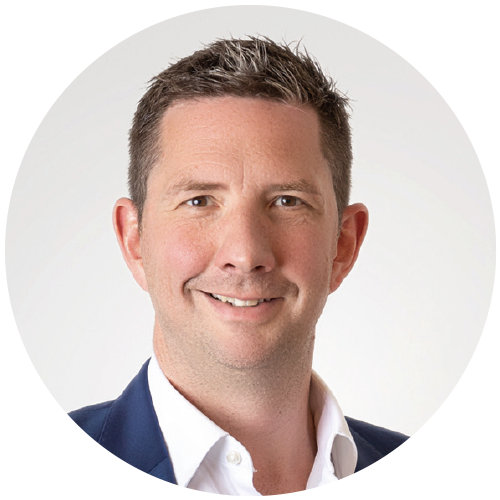
“We could learn a thing or two from the Dutch.”
Björn Sundermann, Managing Director of Robert C. Spies Industrial Real Estate
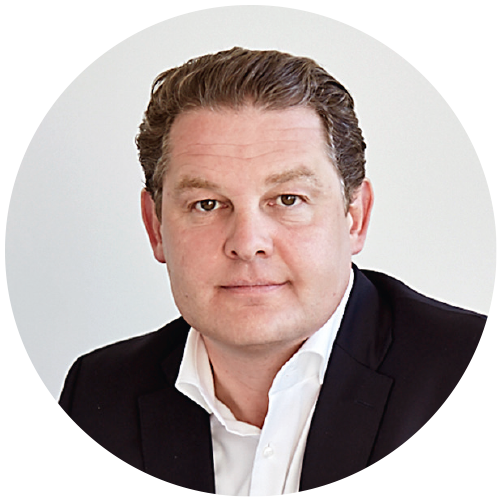
“Those in charge need to factor reliability into their calculations, which they just can’t do at the moment.”
Fred-Markus Bohne, Managing Partner at Panattoni Germany and Austria

“The industry is still dominated by a very analogue structure.”
Malte Wilkens, Managing Partner of the Peper & Söhne consortium
Brownfields – the “construction sites of the future”
“Even if investors are currently holding back on capital investments in new commercial real estate, there is still demand for innovative, sustainable logistics properties,” says René Kaldenhoven, Managing Director of Goldbeck Nord, a Hamburg company that boasts the planning and realisation of logistics and industrial halls in its service portfolio. Goldbeck is currently active in over 40 locations in Germany, including the aforementioned P3 Logistic Parks and Atlantic One projects at JadeWeserPort and Hansalinie 3 in Bremen. “Ecology and economy don’t contradict each other,” says Kaldenhoven about the industry’s increased focus on sustainability. “Even if many of us consider environmental protection to be bad for business, the consensus that Net Zero must be achieved does, indeed, exist.” To realise this, however, the industry must deliver innovative, future-proof concepts that can be applied in a scalable manner. In these efforts, similar to some of Peper & Söhne’s projects, Goldbeck has installed numerous sensors in the Atlantic One multi-user hall, in order to learn as much as possible about the load on the floors and dock levellers, and to generate a great deal of data about the property. “We can use the sensor data to interpret real estate even better and to develop the sustainable building operation of the future,” Kaldenhoven adds, emphasising that, at Goldbeck, even the planning of a building is performed completely digitally so as to generate important information about the whole life cycle of the property. “One of our aims is to become the electromobility real estate expert.” With all this in mind, he sees the brownfields as the ‘construction sites of the future’. “It’s more sustainable to use the existing infrastructure,” he explains. “This is why we’re in favour of building on brownfields, especially since greenfields are becoming increas-ingly rare.” (bre)
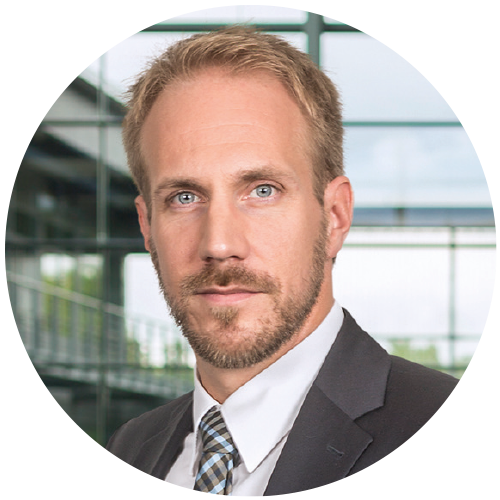
“There is still demand for innovative, sustainable logistics properties.”
René Kaldenhoven, Managing Director,
Goldbeck Nord
Die Lage aus Sicht der Hafengesellschaft
Zwei NPorts-Experten und ihre Erfahrungen rund um Flächenmangel, Kundenanforderungen, Nachhaltigkeit und die Bedeutung von Standortprofilen
Mit 15 Hafenstandorten ist NPorts der größte Betreiber öffentlicher Seehäfen in Deutschland – und damit ein echter Experte in Sachen Logistik- und Spezialimmobilien. Über die aktuelle Lage und den Flächenmangel sagt Dirk Leibfried, Senior Manager Marketing und Sales bei NPorts: „Hafenflächen sind endlich, sie können nicht beliebig vermehrt werden. Die Entwicklung hat natürliche und finanzielle Grenzen.“ Deshalb sei es notwendig, dass ansiedlungswillige Unternehmen einen direkten Bezug zum Hafen haben. „Die Rechnung ist einfach: Mehr Umschlag und zusätzliche Arbeitsplätze sorgen für mehr Wertschöpfung“, so Leibfried. Ein gutes Beispiel dafür sei der Hafen Cuxhaven. Der Multi-Purpose-Hafen expandiere vor allem im Offshore-Bereich. Zudem sorgen die steigenden Anforderungen verschiedener Branchen wie des Autoumschlags oder der Windkraftindustrie dafür, dass Erweiterungen wie der Bau der Liegeplätze 5 bis 7 erforderlich werden. „Die Baugenehmigung liegt vor. Sobald die Finanzierung steht, werden diese Flächen dazu beitragen, die Zwischenlagerung von Windkraftkomponenten zu ermöglichen und den Hafen an anderer Stelle zu entlasten“, blickt Leibfried nach vorn.
Für Hanne Hollander, Leiterin Immobilien bei NPorts in Emden, steht fest, dass Hafenflächen heutzutage nicht mehr ohne Berücksichtigung des Nachhaltigkeitsgedankens vergeben werden dürfen. Außerdem müssen die daraus resultierenden Projekte einen klaren Bezug zum Profil des Standorts aufweisen und gleichzeitig im Einklang mit dem Umfeld, der Kommune und der gesamten Region stehen. In Emden wurden Ende 2022 unter genau diesen Aspekten die Flächen im östlichen Bereich des Wybelsumer Polders und am Rysumer Nacken für hafenaffine Cluster für erneuerbare Energien ausgeschrieben. „Unser Fokus liegt auf der nachhaltigen Ausrichtung der gesamten Flächen, um Leuchtturmprojekte für nachhaltige Gewerbe- und Industrieansiedlungen zu schaffen“, erklärt Hollander. Eine Ausrichtung, die am Markt ankommt, denn es gab mehr Interessenten als Flächen, die vor Ort angeboten wurden. Für sie und ihre Kollegen an den 15 Standorten ist die Suche nach passenden Kunden jedoch eine echte Herausforderung, bei der das Erbbaurecht eine maßgebliche Rolle spielt. Denn im Wesentlichen sind es Pachtverträge, die den Kunden eine langfristige Nutzung einräumen, während die Hafengesellschaft NPorts Eigentümerin bleibt. Das ermöglicht den Häfen, langfristig die Entwicklung zu steuern und ihre besondere Verantwortung für die Entwicklung der Region wahrzunehmen. (bre)
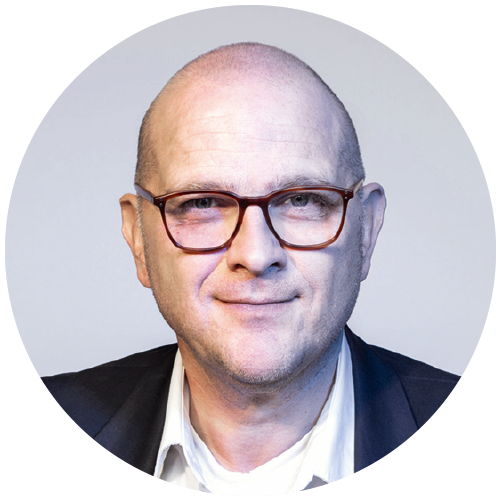
Marketing and Sales at NPorts

at NPorts in Emden

